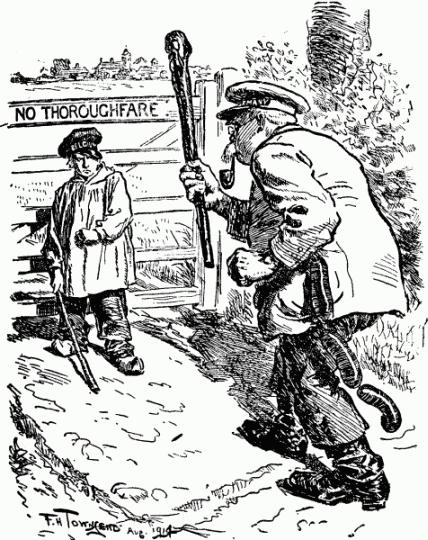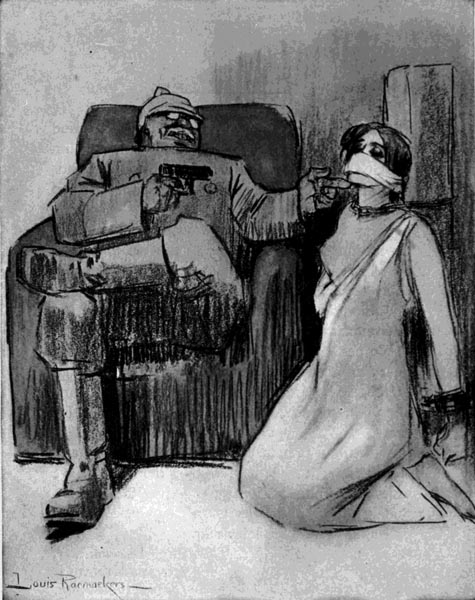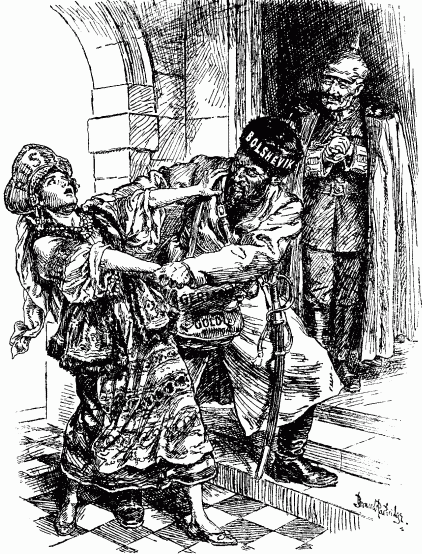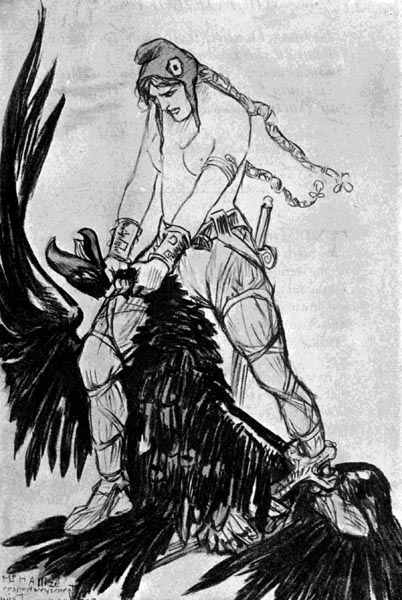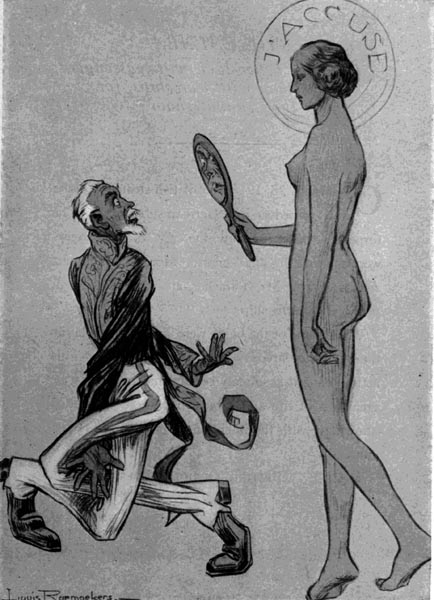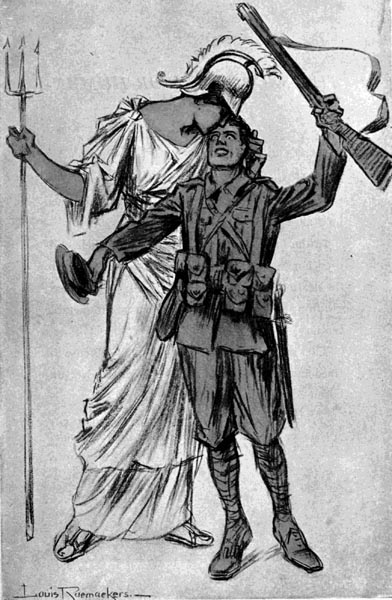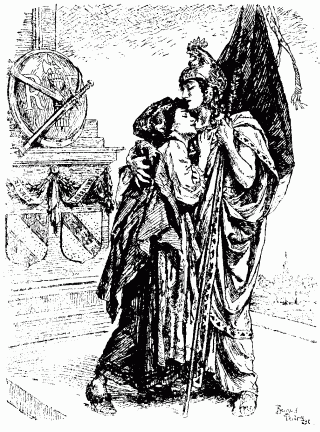National Symbols and Erotics: the Great War November 10, 2012
Author: Beach Combing | in : Contemporary , trackbackNations are often personified: Lady Liberty for France, Uncle Sam for the States, Britannia for the UK. Nor is this new. There is a memorable fifth-century Latin poem that goes through the Roman Empire doling out identities to the different provinces: Gaul, for example, appears as a warrior with two spears. But Beach has recently been looking at some illustrations of national personalities from the Great War. These are particularly of interest because (i) national symbols are such useful abstractions when millions of men and women are trying to kill each other in the names of flags and (ii) because in the tension of war, when covering your enemy with mud is everything, the normal rules of decency are suspended.
Let’s concentrate here on that second point. In Victorian or Edwardian England the closest you could get to sex in a ‘respectable’ picture was a chaste kiss on a flushed cheek: unless of course you were dealing with fairies… The closest you could get to violence was a lifted pitchfork or just possibly a house ma’am with a wooden spoon chasing after a serving boy. But once war was declared on Germany it was open season, Germany is frequently portrayed as an angry old man ready to batter his way wherever he wants to go: see the picture above with a rare personification of Belgium. More interestingly though are the erotics of war.
Violence and sex can, unfortunately all too often do, equal rape: and given the long tradition of describing sovereignty as a woman to be conquered it was predictable that events in the war would be expressed in this way. Here above, for example, is a picture of a “protective” Germany telling little Holland that he will eat her to protect her from the Allies. Under it there is a picture we have printed before of a German or Germany about to rape Belgium. Then beneath there is an illustration of the Bolsheviks handing Russia over to Germany: ‘come on give him a kiss!’ read the caption.
Just occasionally you also get a different kind of erotics: here is a butch biker France suffocating, bare-breasted, the German eagle.
Or a naked France speaking truth to power. But did she have to be nude?
If this was all we would have a series of deliberately crude pictures that shocked sensibilities. But still more interesting for Beach are the erotics of friendship. Enjoy Britannia offering a British Tommy a loving smack on his head. Tommy’s eyes roll back into orgasm.
Or particularly fascinating for Beach, whose libido is really up this morning, are the Sapphic overtones of some images. So France consoles caged Belgium.
Or what about the loving embrace of France and Strasbourg (the lost city) at the war’s end? Get a room…
Other examples: drbeachcombing AT yahoo DOT com
***
31 Dec 2012: J Jarrett from A Corner writes in ‘On National Symbols and Erotics: the fifth-century Latin poem is not where it starts! The Emperor Hadrian (who knew a thing or two about erotics) had a series of coins struck depicting the subjection of various provinces of the Empire personified as women (I’m sorry, patron goddesses) somewhen during his reign, apparently 119-120. This is where the first depiction of Britannia as we know her from our 50-pences comes from, although of course that type is borrowed from Greek coins showing Athena; see the British Museum’s page here: She was not alone in the series, however, Africa, Dacia, and several others also appeared, distinguished by headgear and supporting animals, some more prostrate and entreating than others. Of course the anthropomorphic personification of virtues and essences (of persons or places) as gods or goddesses was far from new and some of the depictions of Venus are pretty damn erotic even now (almost always viewed `a tergo’, wearing little but a helmet, often at a rakish angle), but still, what would Freud have said about all these subject females being depicted at the order of a man still famous for statues of his boyfriend? When Augustus conquered Egypt, and thus Cleopatra VII, of course, his celebratory coinage only featured a crocodile…’ thanks Jonathan!!


